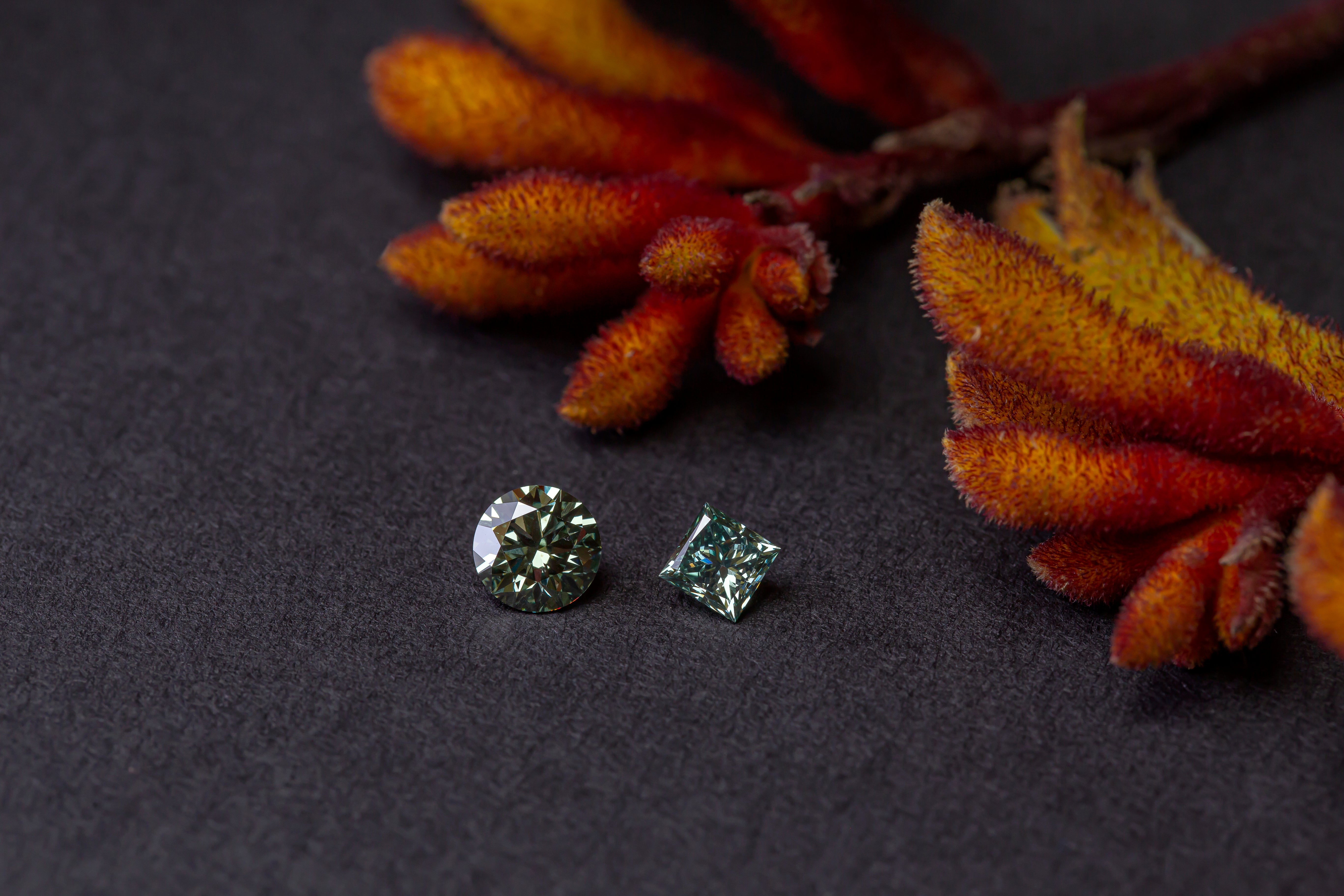Colored diamonds, so-called fancy colors, are rare and also correspondingly valuable. In a mine that produces 35 million carats of diamonds a year, there are, with luck, a handful of the rare colored diamonds. But how are colored diamonds produced in the lab? Is unlimited production of the sought-after fancy colors possible with lab-grown technology? Feel free to read our blog post to learn all about how lab-grown colored diamonds are created.
Color due to trace elements
The classic white diamonds consist of pure carbon, while the inclusion of trace elements results in colored diamonds. For example, the inclusion of nitrogen provides a yellow, orange or brown coloration. In many cases, nitrogen contamination is not welcome, as a yellow to brown coloration means a lower color grade in grading. However, if the chemical composition turns out in such a way that the diamond does not have an unattractive discoloration, but has a full, strong hue, then it is no longer an unwanted, actually white diamond with a low color grade, but a fancy color diamond in yellow, orange or brown. That is, there is a tipping point in the contamination with nitrogen from which the intensity of the color is so high that the value of the diamond rises again.
In order to produce laboratory diamonds in these colors, the conditions prevailing in nature during the formation of colored diamonds are imitated in the laboratory, as is also the case in the production process for colorless laboratory diamonds. This means that specific amounts of nitrogen are added in order to achieve a rich yellow to brown color.
Blue laboratory diamonds are normally produced using the HPHT method and are exposed to boron impurities during production. The boron penetrates the crystal lattice of the diamond and colors the stone blue. The exact chemical composition here again determines the intensity of the blue hue.
Color due to deformation of the crystal lattice and radiation
Green diamonds are formed in nature by the influence of gamma radiation. Accordingly, in order to produce green laboratory diamonds, treatment with radiation and deformation of the diamond's crystal lattice are also necessary.
How exactly red and pink diamonds are formed in nature has not yet been clarified with certainty. However, it is suspected that the pressure on red and pink diamonds is higher than on other diamonds. To produce them in the lab, white lab-grown diamonds are irradiated to cause the defects in the crystal structure that produce the pink color. Red lab-grown diamonds also get their color from a deformation of the crystal lattice. This is produced here by replacing some of the carbon atoms with iron atoms.
Advantages of lab-grown Fancy Colors
As mentioned earlier, Fancy Colors are extremely rare in nature. Colored mined diamonds are therefore valuable and expensive. Lab-created Fancy Colors, on the other hand, are less expensive and quite affordable even on a smaller budget, depending on the carat and cut.
Colored diamonds can be produced purposefully in the laboratory, even though this process is still extremely complex at the highest technological level. In addition, the manufacturing conditions in the laboratory can be precisely controlled, which is why the color intensity of colored laboratory diamonds is often higher. Also, the ideal color tones can be more accurately matched because the creation process takes place under controlled conditions from start to finish.
Like colorless diamonds, lab-grown fancy colors have the same chemical and optical properties as their mined counterparts, with the added benefit of being priced lower. In addition, lab-grown colored diamonds naturally have the advantage of conserving the earth's natural resources, as they are not mined. Furthermore, if renewable energy is used in the manufacturing process, they can be a far more sustainable alternative to colored mined diamonds. So if you don't want a classic white diamond, but would like a piece of jewelry with fancy color diamonds, it is well worth considering buying a lab diamond.



Share:
NDC Report: Ethically sourced diamonds?
Series "Quality criteria of a diamond": The history of the 4 Cs